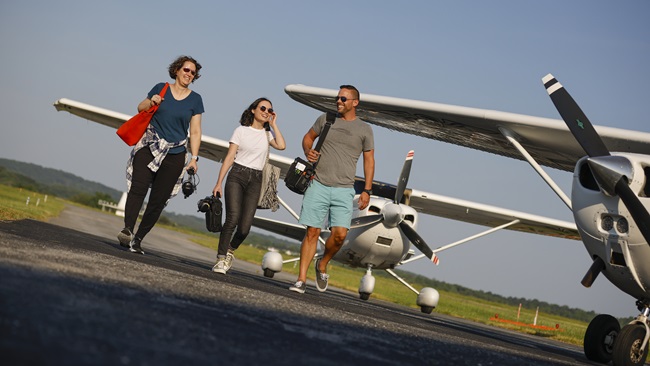 By the time a pilot reaches the stage where he’s checking out in a turbine-powered airplane—especially a jet—he or she has probably heard the aviate-navigate-communicate order of piloting task importance ad infinitum. Most know that aviating comes first, but based on my experience, the odds are that neophyte jet drivers simply don’t follow it. Or even experienced jet pilots, for that matter.
By the time a pilot reaches the stage where he’s checking out in a turbine-powered airplane—especially a jet—he or she has probably heard the aviate-navigate-communicate order of piloting task importance ad infinitum. Most know that aviating comes first, but based on my experience, the odds are that neophyte jet drivers simply don’t follow it. Or even experienced jet pilots, for that matter.
In my years as a piston and turbine aircraft flight instructor and recently as an FAA designated pilot examiner (see page 85), I have seen novices and seasoned airline captains deliberately—or automatically?—set aside critical aviating and navigating tasks to answer that oh-so-important radio call. This distraction usually enabled these well-intentioned aviators to blow through localizers, miss step-down altitudes on approach, go way over target airspeeds on an approach—or, worse, neglect to extend the landing gear. Other pilots have allowed their airspeed to deteriorate and nearly stall the aircraft while dutifully responding to a simple frequency change request.
The problem gets magnified during instrument approach procedures. Here’s how a sample scenario might go: We’re past an initial approach fix, on the way to intercepting the final approach course. I see that our airspeed is 200 knots, my student doesn’t. This is way too fast for the airplane’s 185-knot VFE for the first increment of flap deployment. We’re too fast for this stage of the approach, covering 3 nautical miles in well under a minute. Next up is a vector to turn onto the ILS final approach course, with the final approach fix a mere minute away. We’re on altitude—1,200 feet—but still too fast. Suddenly the student realizes it, yanks back on the power, and watches for 185 knots. It finally comes, but so does a call from ATC. “Cleared for the ILS, on the miss, climb to 600 feet, then a right turn to 240 degrees. Over to tower now, 123.45.”
Now he’s over the FAF at 180 knots, the glideslope needle is coming in, and he hasn’t lowered the gear yet. And what does he do? Calls back to ATC and reads back the instructions, most of which he’s forgotten because he now realizes he hasn’t put down the gear, and hasn’t slowed to the VREF of 100 knots. As he makes the call he blows past the FAF—still at 1,200 feet—and the glideslope needle drops off the bottom of the scale. Down comes the landing gear, back come the power levers, and now we’re diving for the glideslope. But the runway threshold is only a mile away, and we’re high and fast. A stabilized approach? I don’t think so.
What should he have done? Set power and configuration for 120 knots on the way to the FAF, lowered the gear about a mile from the FAF, and been ready to make a pitch and power reduction for final. If a radio call comes, it comes. And with the procedural aspects out of the way, he’d have been ready to make that callback in a less tense situation. As it was, he was trying to do four things at once.
The FAA expects an expeditious response to ATC communications, but not at the risk of neglecting the primary task at hand—flying the airplane. Apart from collision advisories, we should complete aviating tasks during critical phases of flight prior to keying the push to talk (PTT) button. Usually a “stand by” to ATC is sufficient as you attend to your duties.
Once during an airline initial operating experience flight, I let a controller’s ride report request distract me enough to set the wrong assigned altitude in the flight director. Thankfully, my training captain schooled me in a way to break the urge to go for the PTT. At the next frequency change request, acknowledge it, dial in the new frequency, flip flop it to the active side, and then sit on your hands for 10 seconds. It was a long 10 seconds waiting to check in with that new sector controller. I expected him to be furious when I finally did but all I got was a “Good morning, altimeter such and such” reply.
That technique worked for me, as
well as others I have had the pleasure to train. Those who choose to prioritize their pilot workload by aviating, navigating, and then communicating are much safer pilots.
Jack Boyd is a piston and turbine flight instructor and DPE in the Miami area.


